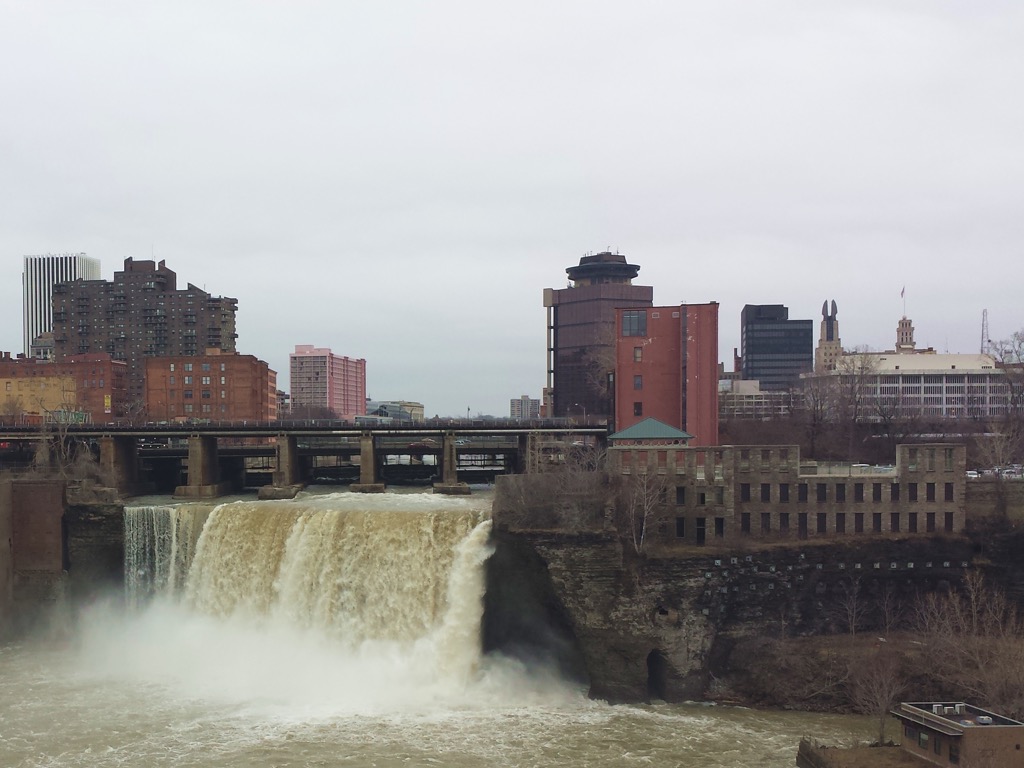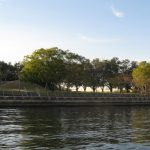Main Street runs east-west across the center of downtown Rochester. The Genesee River runs north-south, and both intersect in the center of downtown. The aqueduct runs under Broad Street, which parallels Main Street one block to the south. The study area is approximately 112 acres: the Main Street corridor between Plymouth Avenue and Chestnut Street; Genesee River corridor between Andrews Street and the Court Street Dam; Broad Street Aqueduct and former Rochester Subway Tunnel underneath Broad Street between Woodbury Boulevard and Main Street.
In the last several years, Main Street and surrounding downtown streets have seen a notable influx of private investment for the creation of residential units through the adaptive reuse of formerly vacant commercial buildings. Despite this, much of the street level first floor spaces are still vacant and Main Street is still primarily oriented for commercial use only. It lacks the diversity of land uses, amenities, and experiences that residents, workers, and visitors desire and need.
Some investment has been made along the Genesee Riverfront in an attempt to draw people to it for recreation purposes, both passive and active. Despite this, there has been limited success in activating use of the riverfront. In addition, the 18-mile long Genesee Riverway Trail suffers from a significant gap in the downtown area, hindering the effectiveness of the regional trail system.
The Broad Street Aqueduct was originally built to carry the Erie Canal over the Genesee River. When the canal was rerouted, the aqueduct and adjacent canal bed was repurposed as the route of the Rochester Subway, complete with a new street laid over the top of the tracks to form a 10-block tunnel in downtown. The subway was removed in the 1950s, leaving the aqueduct and canal bed vacant ever since. Several ideas have been examined for adaptive reuse of this historic structure and corridor, but no plan has emerged as a preferred and feasible design.
These three key assets intersect in the heart of Rochester and are central to the community’s identity. Their lack of vibrancy and activity has a tremendous impact on the perception and success of downtown, the city, and even the region. Various high-profile projects have met with mixed success in recent years, contributing to a certain degree of pessimism for downtown’s future. However, an emerging cohort of millennials, empty nesters, and urban enthusiasts have started to write their own narrative for Rochester based on increasing desire for urban living and a sense of pride in this resilient rust belt city. The recent successes of residential development downtown (mainly apartments in rehabbed historic buildings) is also beginning to generate new restaurants, entertainment, and retail uses.
One of our biggest challenges is that the economic climate has not been terribly supportive of new development for many years. While developers have figured out how to make historic rehabs pencil, new construction mixed-use is the next frontier. Following the conventional “retail follows residential” storyline, we hope to position the city to more effectively accommodate the next phase of Downtown’s transformation through creative strategies and policies.




